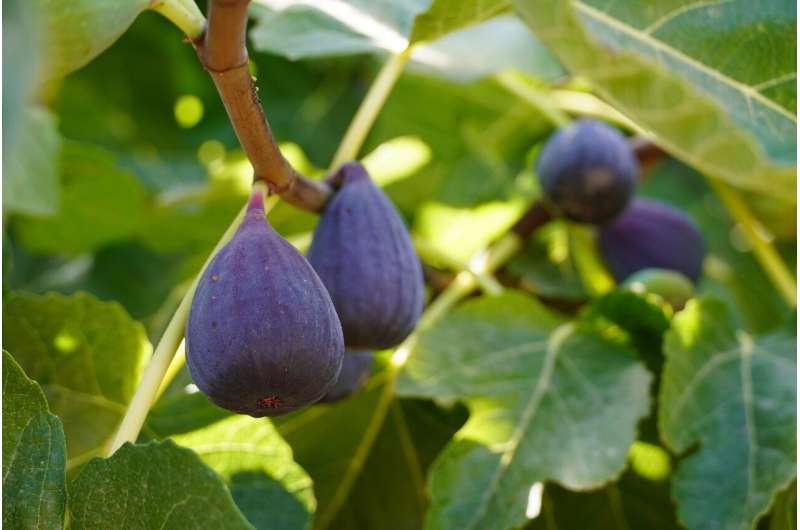This article has been reviewed according to Science X's editorial process and policies. Editors have highlighted the following attributes while ensuring the content's credibility:
fact-checked
peer-reviewed publication
trusted source
proofread
Unraveling the tangled evolution of figs

Containing more than 850 species, fig trees are one of the most diverse groups of plants in the world.
To unravel how this plant genus (Ficus in the Moraceae family) evolved to become such a diverse group, an international team of researchers, including a Northwestern University plant biologist, examined 1,858 genes from 520 species of figs. The study was published earlier this month in the Proceedings of the National Academy of Sciences.
Although previous researchers have hypothesized that fig diversity arose from widespread gene sharing across fig species, the new study instead suggests that gene sharing only modestly contributed to figs' evolution. The new analysis paints a picture of stable evolution within lineages, punctuated by only occasional instances of cross-species gene sharing.
"When most people think of figs, a sweet, chewy treat comes to mind. But that tasty treat represents just one species," said Nyree Zerega, a Northwestern botanist who co-authored the study. "Figs are one of the most diverse groups of plants and ecological keystones in a variety of habitats around the world. Their evolutionary history and how they become so diverse has been difficult to unravel."
Zerega is the director of the Program in Plant Biology and Conservation, a partnership between Northwestern and the Chicago Botanic Garden. The study was led by Elliot M. Gardner, who received his Ph.D. at Northwestern and is now an assistant professor at Case Western University.
When trying to explain fig trees' diversity, previous researchers have looked to introgression—a process in which genes pass from one species to a related species through hybridization—as a major driver of fig diversity. This hypothesis emerged partly due to the way figs are pollinated. Each fig species is thought to have a unique fig wasp species that pollinates it, so pollinator switching could lead to hybridization driving diversity.
But the new study suggests fig trees' evolution was steadier than that.
Fig evolution instead followed a stable, tree-like pattern with hybridization only occasionally leading to introgression across lineages, the researchers found. Few instances of introgressions among major fig lineages occurred.
The new analysis also examined fig trees' relationship to the fig wasp pollinators of the Agaonidae family, which are specialized to pollinate fig trees. The researchers found that the ability to hybridize locally does not always lead to cross-lineage introgression in plants, especially when obligate plant–pollinator relationships exist.
"This study illuminates the complementary role of hybridization between fig species along with the role of co-diversification with their obligate fig wasp pollinators in the evolution and amazing diversification of this important group," said Zerega, a conservation scientist at the Chicago Botanic Garden's Negaunee Institute for Plant Conservation Science and Action. "But just as importantly, it provides a much-needed evolutionary road map that will be a game changer in informing future studies of this important group."
More information: Elliot M. Gardner et al, Echoes of ancient introgression punctuate stable genomic lineages in the evolution of figs, Proceedings of the National Academy of Sciences (2023). DOI: 10.1073/pnas.2222035120
Journal information: Proceedings of the National Academy of Sciences
Provided by Northwestern University




















